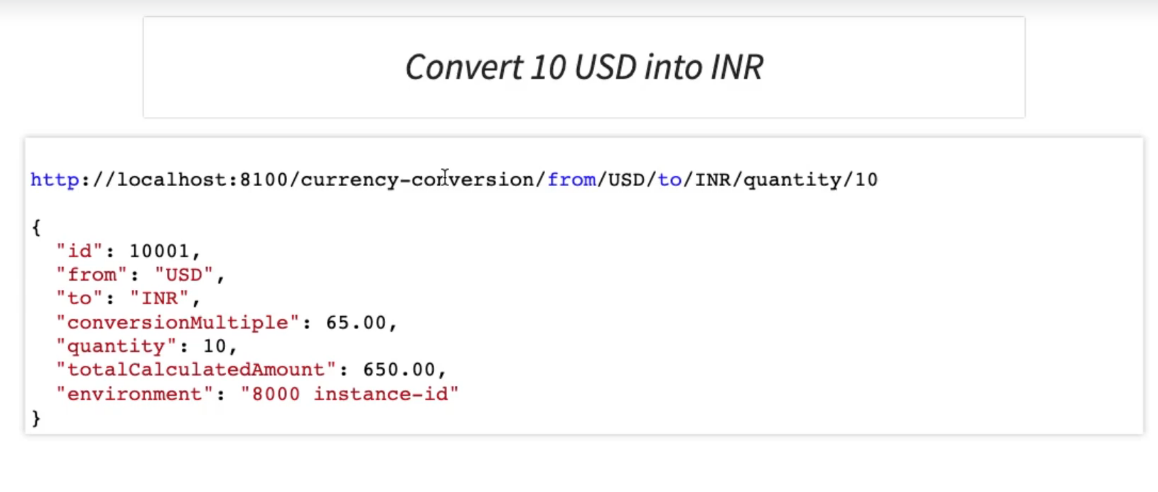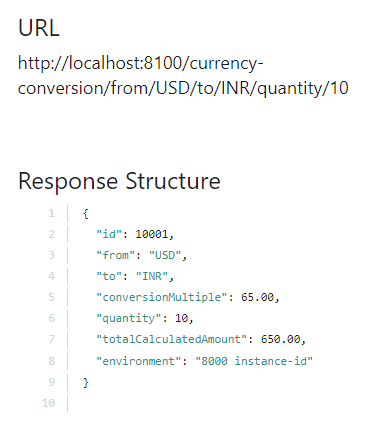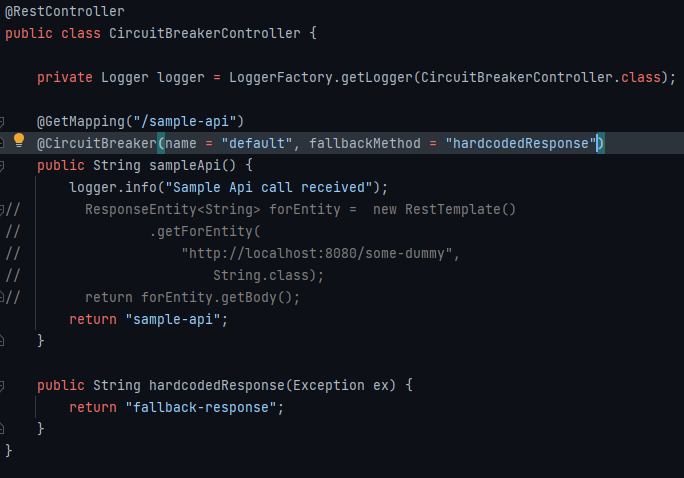Exchange office
System implemented in Microservice Architecture
Main repository
-> This repository gathers all microservices and projects involved in the development of a exchange-office system.
Repositories used for development of the microservices
-> Currency Conversion Microservice
-> Currency Exchange Microservice
-> Limits Microservice
-> Docker Techniques Used Documented
-> Kubernetes and Google Cloud Kubernetes Engine Techniques Used Documented
-> API Gateway
-> Spring Cloud Centralized Configuration
-> Centralized Configuration With Git Repository
-> Spring Cloud Centralized Configuration
-> Eureka Server Configuration
Centralized Configuration
Limits Service
- configuration dependency
- that's the reference to the centralized configuration server
- the limits will be retrieved from the config server
- we can define them hard coded in properties
- these values
- are mapped to those attributes
Spring cloud config server
- naming the applications is a good practice
- that application will fetch data from the files
- wich are on the git repository
- then each microservice will fetch the centralized
- spring cloud config server wich fetches from the
- git repository
- since the spring cloud config server runs in port
- 8888, if we define the profile as qa, the data fetched
- will be
- so each microservice can define each own profile to
- pass forward to the spring cloud config application
- to allow the configurarion we need to enable it using
- checking the spring cloud configuration server
Currency Exchange & Currency Conversion
Currency Exchange
- good practices
- connecting to the spring cloud config server
- currency exchange entity
- dynamic ports in the response
- we need to know wich instance of the currency exchange
- is providing the response when we call it from the
- currency conversion, so we know if the load balancer
- is working fine
- no matter what instance is being called, the port it is
- up on, will be sent in the response
- we cant test it locally setting the server.port and run
- different projects for the same microservice in intellij
- setting up in memory database to mock some data in /resources
- import to remember h2 and jpa dependency
- fetching the data from database
- payload
Currency Conversion
- currency conversion will fetch data from currency exchange
- so we can know the necessary data to make the conversion
- good practice
- currency conversion entity
- communication between the microservice without Feign
-
communication between the microservice with Feign
-
spring cloud feign dependency
Naming server
- the problem is if we need to change the port that we call
- from the currency conversion through feign to currency
- exchange, we need to hard code it and go and change
- is kind of like the naming server is asked for a instance
- and together with the load balancer it gives the instances
- back to who calls it
- we can use Eureka Server from spring cloud
- enabling Eureka Server
- good practice
- since we don't want it self to register in the server
- connecting the microservices to the naming server
- we need to add the eureka dependency to the microservices
- just from adding the dependency it will connect to the naming
- server, but is better to make it explicit
Load balancing
- we want to load balance the intances of currency exchange
- when they are called from the currency conversion microservice
- we just need to make the feign call it like this
- so the instances registers in eureka, locally we can see it
- when running two different projects of the same microservice
- so once we call the currency exchange microservices it is
- load balanced
- lately the load balancer was ribbon, but now it is implemented
- by eureka
API Gateway
- lately it was implemented with Zuul, but now it is implemented
- by spring cloud gateway
- we want the api gateway to connect to eureka server, so we need
- the eureka dependency
- spring cloud gateway dependency
- good practice
- registering api gateway to the naming server
- the idea is to the api gateway to recieve a request and then
- talk to the naming server, find the refereed microservice
- end-point as pass it forward
- since it is already registered in eureka, we just configure
- now every request go through the gateway
- customizing the routes to be redirecteds
- filtering requests from gateway
- pointing out spring cloud gateway
Circuit breaker
- lately Hystrix was the used circuit breaker
- but Resillience4j was implemented to take care of Java 8 features
- needed dependencies
- @Retry
- it could be a call to some other api using feign
- with default, if it fails it makes three attempts, only then if
- it continues failing it return the error back
- custom retry configuration
- fallback
- it refeers to a method in the class, and it could return anything
- it could be some fallback response stored in database, memory, cache
- or some file
- all of the retry configurations comes into play when handling with
- fallback responses
- @CircuitBreaker
- we can test it with a combination of curl and watch
- the circuite breaker gives the return back without calling
- the methods
- because it sees that there are so many requests
- so it break the circuit and return responses
- close state
- calling continuosly
- open state
- it won't call the directed microservice, return the fallback directly
- half open state
- sending a percentage of requests, and then returns the fallback
- rate limits for a specific api call in the method you use it
- bulkhead limits concurrent calls



























































